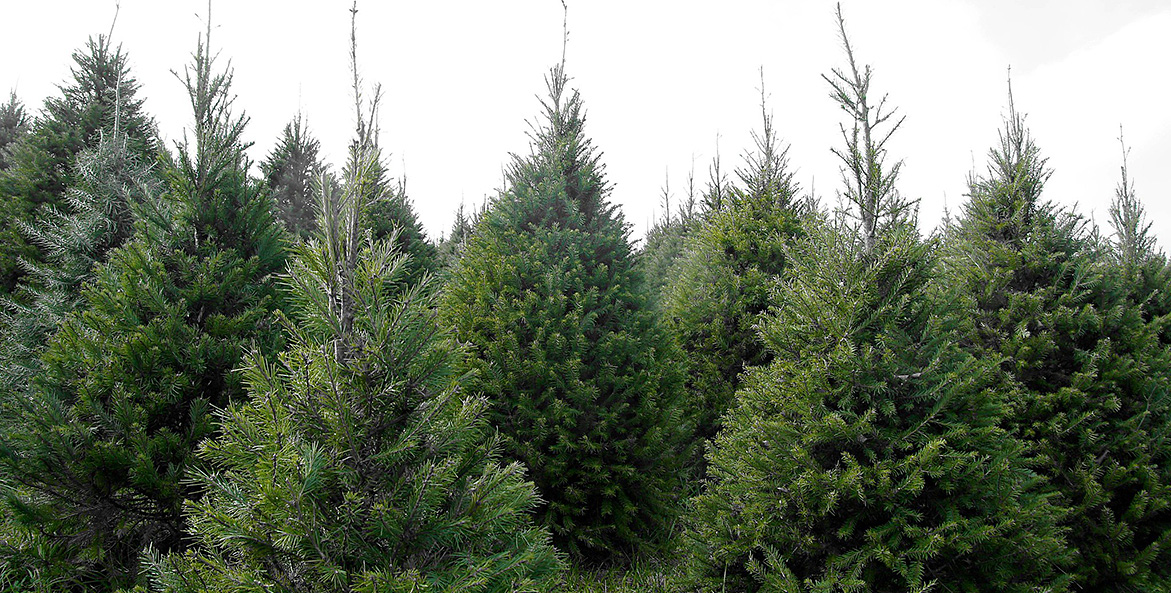Unlike artificial trees, real Christmas trees are recyclable and renewable resources that clean our water and our air and provide important habitat for wildlife. Buying a real Christmas tree every year also supports local growers, which is good for the economy. It is a small step we can take at holiday time that can lead to more resilient local waters and communities.
According to the National Christmas Tree Association (NCTA), there are roughly 25 million to 30 million real Christmas trees sold in the U.S. every year.
Real trees...can be recycled as mulch or compost, added to the landscape as food and habitat for wildlife, or placed into lakes and ponds to benefit aquatic life.
The good news is, growers say there should be an ample supply of trees to choose from this holiday season, despite drought conditions across the region.
For some people, having a real Christmas tree is not a viable choice. But, according to the NCTA, an artificial, petroleum-based tree is used for just six to nine years before it is disposed of, taking up permanent space in the local landfill. The key to reducing the environmental impact of an artificial tree is to reuse it for many years.
At the Chesapeake Bay Foundation, we know a thing or two about the value of trees. With roughly 300 partners across the Commonwealth, we are continuing the campaign to plant 10 million new trees for Pennsylvania, through the Keystone 10 Million Trees Partnership. Our focus is on adding a wide array of native trees to the landscape.
Pennsylvania has over 1,400 Christmas tree farms, fourth-most in the nation behind Oregon, North Carolina, and Michigan.
Before being cut, real Christmas trees absorb air pollutants and sequester carbon dioxide and emit fresh oxygen. Important to water quality, the trees stabilize soil and reduce erosion, reducing polluted runoff by filtering and absorbing pollutants that would otherwise flow into local rivers and streams.
Real trees are biodegradable and after the season can be recycled as mulch or compost, added to the landscape as food and habitat for wildlife, or placed into lakes and ponds to benefit aquatic life. Many communities offer recycling programs and curbside pickup. You may even know a local farmer who would appreciate your tree as a tasty treat for their goats!
Buying a real Christmas tree supports the more than 100,000 employees and nearly 15,000 farms in the United States. Pennsylvania has over 1,400 Christmas tree farms, fourth-most in the nation behind Oregon, North Carolina, and Michigan.
Tree farms account for nearly 31,000 acres in the Commonwealth and about one million trees are cut each year.
Christmas trees are often grown on soil that doesn’t support other crops. Growers plant one to three new seedlings for every tree harvested.
Selecting and cutting your own tree is also an outdoor activity where family memories are created.
The Pennsylvania Christmas Tree Growers Association offers these suggestions:
- Try to select a fresh tree by looking for one that is green. The needles should bend and not break and should be hard to pull off of the branches. Shake or bounce the tree on its stump. You should not see an excessive number of green needles fall to the ground. Some drop of older, interior needles is a natural and normal part of a tree’s growth.
- As soon as the tree is brought home, make a fresh cut, removing at a “maximum of one inch” of the trunk and place the tree in a sturdy water-holding stand. If you have a pin stand and the retailer has drilled your tree and you cut off more than an inch, the hole will not be big enough and the stand won’t work.
- The level of plain water in the tree stand, with a capacity of at least one gallon, should be kept above the base of the tree. The water level should be checked daily. Trees should be kept away from fireplaces, heaters, and other sources of heat.
To learn more about the Keystone 10 Million Trees Partnership, visit www.tenmilliontrees.org.




